
ColecoVision is a second-generation home video-game console developed by Coleco and launched in North America in August 1982. It was released a year later in Europe by CBS Electronics as the CBS ColecoVision.

Zaxxon is a scrolling shooter developed and released by Sega as an arcade video game in 1982. The player pilots a ship through heavily defended space fortresses. Japanese electronics company Ikegami Tsushinki was also involved in the game's development.
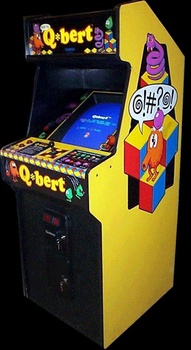
Q*bert is an arcade video game developed and published for the North American market by Gottlieb in 1982. It is a 2D action game with puzzle elements that uses isometric graphics to create a pseudo-3D effect. The objective of each level in the game is to change every cube in a pyramid to a target color by making Q*bert, the on-screen character, hop on top of the cube while avoiding obstacles and enemies. Players use a joystick to control the character.

Pitfall! is a video game developed by David Crane for the Atari 2600 and released in 1982 by Activision. The player controls Pitfall Harry, who has a time limit of 20 minutes to seek treasure in a jungle. The game world is populated by enemies and hazards that variously cause the player to lose lives or points.
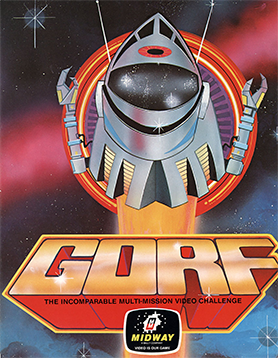
Gorf is an arcade video game released in 1981 by Midway Manufacturing, whose name was advertised as an acronym for "Galactic Orbiting Robot Force". It is a fixed shooter with five distinct levels, the first of which is based on Space Invaders and another on Galaxian. The game makes heavy use of synthesized speech for the Gorfian robot which taunts the player, powered by the Votrax speech chip. Gorf allows the player to buy two additional lives per quarter before starting the game, for a maximum of seven lives.
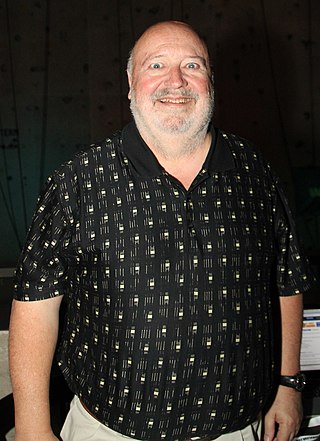
Albert William Lowe is an American video game designer who developed several adventure games, mostly for Sierra On-Line. He created the Leisure Suit Larry series. He has also worked as a casting director, voice director, writer, director, producer, background photographer, actor and executive producer.
Robert S. Harris, nicknamed RoSHa, is an American designer and programmer who created several 1980s home computer and console games, including War Room and Killer Bees!.
1982 was the peak year for the golden age of arcade video games as well as the second generation of video game consoles. Many games were released that would spawn franchises, or at least sequels, including Dig Dug, Pole Position, Mr. Do!, Zaxxon, Q*bert, Time Pilot and Pitfall! The year's highest-grossing video game was Namco's arcade game Pac-Man, for the third year in a row, while the year's best-selling home system was the Atari 2600. Additional video game consoles added to a crowded market, notably the ColecoVision and Atari 5200. Troubles at Atari late in the year triggered the video game crash of 1983.

Mr. Do! is a 1982 maze video game developed by Universal. It is the first arcade video game to be released as a conversion kit for other cabinets; Taito published the conversion kit in Japan. The game was inspired by Namco's Dig Dug released earlier in 1982. Mr. Do! was a commercial success in Japan and North America, selling 30,000 arcade units in the US, and it was followed by several arcade sequels.

Dragonstomper is a video game developed by Stephen Landrum for the Atari Video Computer System and released by Starpath. The game follows the adventures of a dragon hunter who is given a quest by the king to defeat a dragon and reclaim a magical amulet that was stolen. The player makes their way over the countryside, vanquishing various adversaries and gaining gold and experience. After achieving enough strength, the player can enter a shop in an oppressed village where equipment can be purchased, soldiers hired, and special scrolls obtained to defeat the dragon in its lair.

Venture is a fantasy-themed action game released as an arcade video game in 1981 by Exidy. Each level consists of a playable, overhead map view. Upon entering one of the rooms shown on the map, the game zooms in until the room fills the screen. As a round smiley-face named Winky, the goal is to collect the treasure in each of the rooms. Winky can shoot arrows at enemies which turn into slowly disintegrating corpses when hit. Corpses are deadly to the touch. Each room has a different layout, treasure, and enemies, and some rooms have special features, such as moving walls.

In the history of video games, the second-generation era refers to computer and video games, video game consoles, and handheld video game consoles available from 1976 to 1992. Notable platforms of the second generation include the Fairchild Channel F, Atari 2600, Intellivision, Odyssey 2, and ColecoVision. The generation began in November 1976 with the release of the Fairchild Channel F. This was followed by the Atari 2600 in 1977, Magnavox Odyssey² in 1978, Intellivision in 1980 and then the Emerson Arcadia 2001, ColecoVision, Atari 5200, and Vectrex, all in 1982. By the end of the era, there were over 15 different consoles. It coincided with, and was partly fuelled by, the golden age of arcade video games. This peak era of popularity and innovation for the medium resulted in many games for second generation home consoles being ports of arcade games. Space Invaders, the first "killer app" arcade game to be ported, was released in 1980 for the Atari 2600, though earlier Atari-published arcade games were ported to the 2600 previously. Coleco packaged Nintendo's Donkey Kong with the ColecoVision when it was released in August 1982.
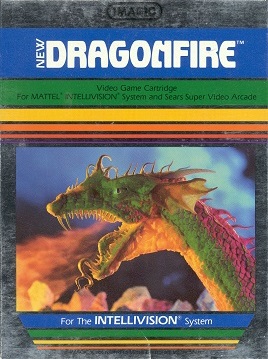
Dragonfire is a 1982 video game written by Bob Smith and published by Imagic. The player grabs treasure guarded by a dragon while avoiding fireballs. It was originally released for the Atari 2600 then ported to the Intellivision, VIC-20, Commodore 64, Apple II, ZX Spectrum, ColecoVision, and TRS-80 Color Computer.

Tutankham is a 1982 arcade video game developed and released by Konami and released by Stern in North America. Named after the Egyptian pharaoh Tutankhamun, the game combines a maze shoot 'em up with light puzzle-solving elements. It debuted at the European ATE and IMA amusement shows in January 1982, before releasing worldwide in Summer 1982. The game was a critical and commercial success and was ported to home systems by Parker Brothers.
Bop-A-Bet is a 1982 educational game developed and published by Sunnyside Soft for the Apple II. It was subsequently also published by Sierra On-Line. The game teaches letter recognition and alphabetization. The speed of the game increases as the user becomes more proficient.
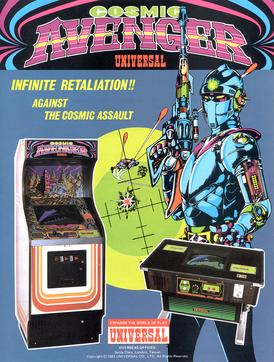
Cosmic Avenger is a scrolling shooter developed by Universal and released as an arcade video game in July 1981. It is part of the first wave shooters with forced horizontal scrolling which followed Konami's Scramble and Super Cobra from earlier in the year. It was released the same month as Vanguard. The final installment in Universal's Cosmic series, players take control of the Avenger space fighter and, as in Scramble, use bullets and bombs against enemy air and ground forces. The world is one continuous level made up of different areas.

Snooper Troops is a series of two 1982 adventure/educational video games developed by Spinnaker Software and published by Computer Learning Connection. They were released for the Apple II, Atari 8-bit computers, Commodore 64, and MS-DOS. The first case was entitled Snooper Troops: Case #1: The Granite Point Ghost and the second case entitled Snooper Troops: Case #2 - The Case of the Disappearing Dolphin was released later that year.
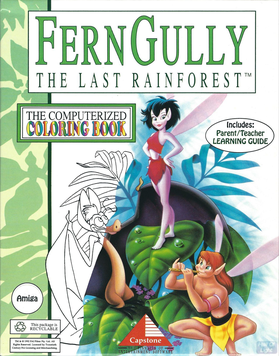
Computerized Coloring Books is a collection of three games developed by Capstone Software and published by its parent company IntraCorp for MS-DOS and Amiga. A port for Windows 3.1 was planned but never released. The games are based on Bill Kroyer's film FernGully: The Last Rainforest, Don Bluth's film Rock-a-Doodle, and John Hughes's film Home Alone. The Rock-a-Doodle game was as released with Trolls and An American Tail: The Computer Adventures of Fievel and His Friends on the Capstone CD Game Kids Collection.

Run for the Money is a two-player business simulation video game developed by Tom Snyder Productions and published by Scarborough Systems in 1984 for Apple II, Atari 8-bit computers, Commodore 64, IBM PC, and Macintosh. The players have crash-landed their spaceships on an alien planet and compete to buy resources and convert them to goods to sell to locals in order to raise funds to repair their ships.
















